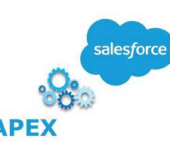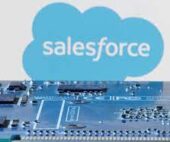Generative AI (GenAI) has become a powerhouse in today’s technology landscape. From boardrooms to startups, everyone is eager to label their products and services as “Powered by AI.” But the real question is: how much value is it truly adding?
A common misconception is that GenAI equates to AI as a whole. In reality, AI is a vast field, encompassing numerous approaches suited to different challenges. GenAI is just one piece of that puzzle—powerful, yet not always the ideal tool for every task.
Gartner’s article, When Not to Use Generative AI, illustrates this perfectly. GenAI shines in generating content and driving conversations. It also performs well in tasks like classification and recommendation systems. However, when it comes to decision-making or predictions, GenAI’s capabilities are less robust.
So why all the hype around GenAI? Its appeal lies in its ability to produce high-quality, distinctive results effortlessly. With APIs from companies like OpenAI, integrating these models into existing systems has become straightforward. Tools like Semantic Kernel and LangChain make it possible to add AI to software with just a few lines of code.
But while integrating GenAI is easy, using it effectively is a different challenge. Mastering prompt engineering, managing token usage, and potentially incorporating Retrieval-Augmented Generation (RAG) are essential skills. Fine-tuning the model is another option, but it comes with risks. In some cases, fine-tuning can cause the model to “forget” its base learning, leading to incorrect results.
Cost is another significant concern—not just in financial terms, but also latency and environmental impact, which is often overlooked. Even if everything goes smoothly, there’s no guarantee that GenAI will be flawless. One major drawback is its tendency to hallucinate, a problem that persists despite improvements in newer models.
It can be frustrating when GenAI is misused for deterministic tasks. Simple if-else statements are often replaced with GenAI-driven decision-making, which can lead to over-engineering. Adding GenAI just to claim the use of AI isn’t a practical solution.
According to another Gartner report, 30% of Generative AI Projects Will Be Abandoned After Proof of Concept by the End of 2025, a significant portion of GenAI projects are expected to fail. This outcome isn’t surprising, as many organizations rush to incorporate GenAI without fully understanding its value.
While there’s no shortage of articles praising GenAI, it’s important to recognize the limitations. AI critic Gary Marcus highlights these challenges in his article, Why the Collapse of the Generative AI Bubble is Inevitable.
That said, there’s no denying the transformative power of GenAI. Many projects have seen tremendous success with its implementation. For instance, GitHub Copilot has been a game-changer for productivity in coding environments.
However, it’s essential not to become overly reliant on any single AI technique. AI methods can complement each other. Combining GenAI with other machine learning models can improve accuracy, transparency, and performance, while reducing costs and data requirements. For instance, pairing GenAI with non-generative machine learning models can enhance segmentation and classification tasks, and integrating it with optimization techniques can improve enterprise search.
The potential for these combinations is vast, offering innovative solutions across sectors, including healthcare. By leveraging multiple AI approaches, businesses can overcome the limitations of any one technique.
Ongoing research is continually improving GenAI, and the future holds exciting prospects. However, it’s crucial for businesses to carefully evaluate their needs before selecting any AI technology and assess the actual value it adds.
In some cases, GenAI is a game-changer; in others, it falls short. The key is to weigh the pros and cons for each specific scenario and avoid being swept up in market trends. No single technology is a universal solution to every problem.










